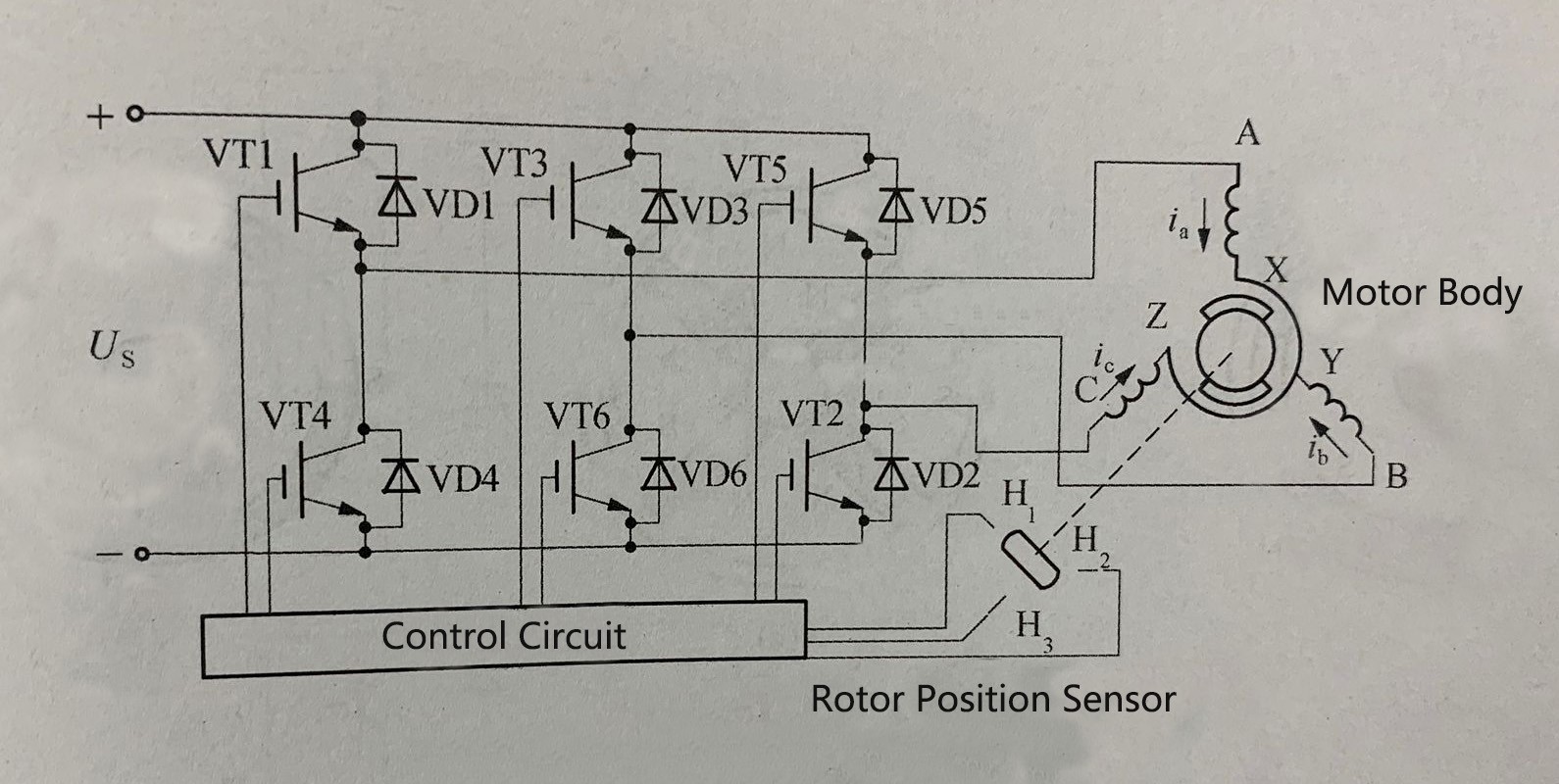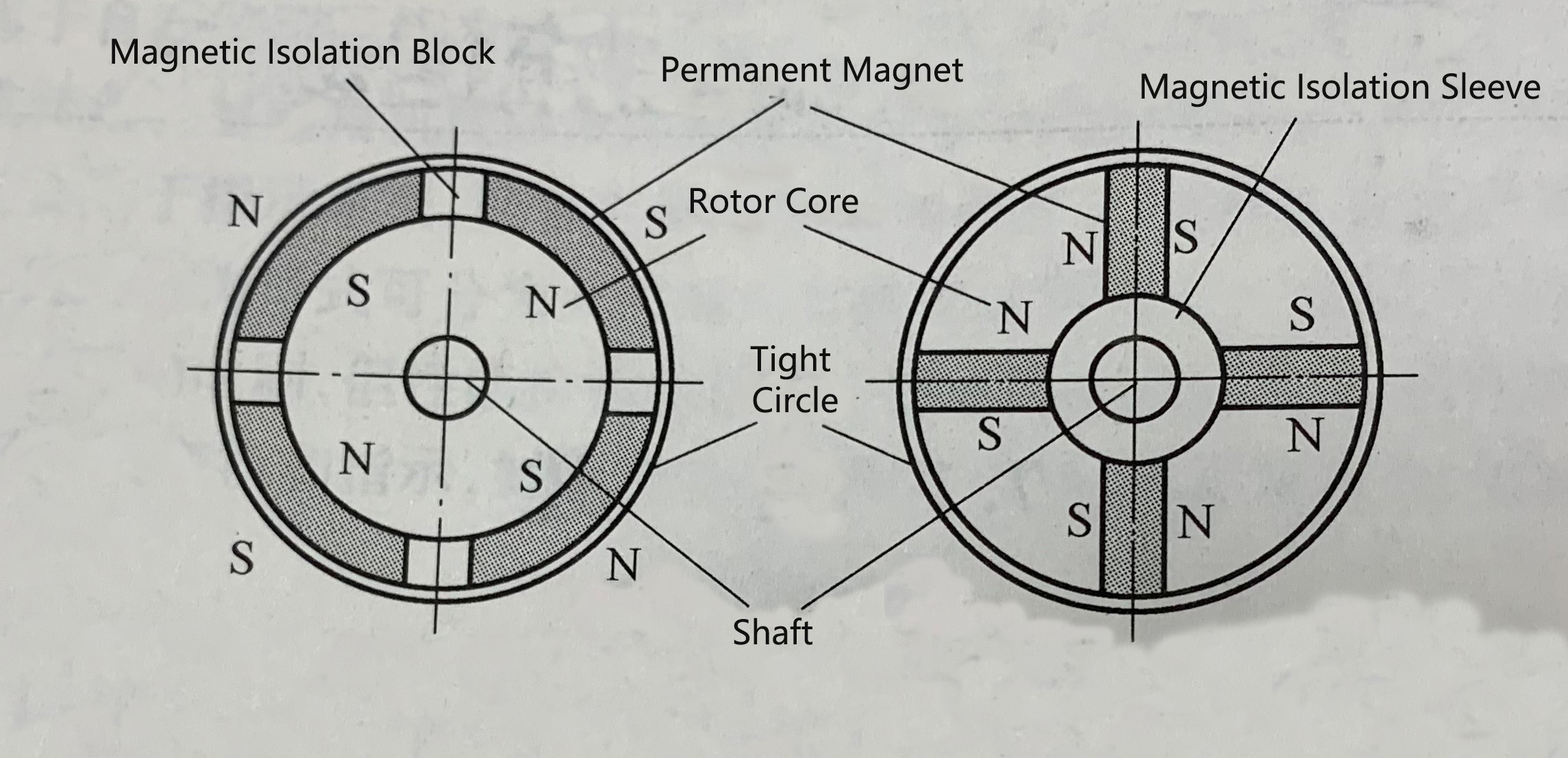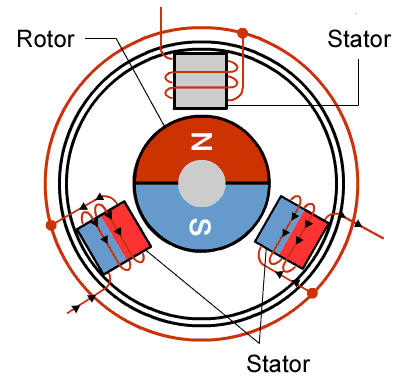What is a Brushless DC Motor?
What is a Brushless DC motor? A Brushless DC motor is a typical mechatronics product composed of a motor body and a driver. Unlike traditional motors, it operates without brushes and a commutator, earning it the alternative name Commutator-Less Motor. In the early days, DC motors were widely used due to their excellent speed regulation, strong starting characteristics, and high stall torque. As a result, they found broad applications in various drive systems and servo mechanisms. However, the sliding mechanical contact between the brushes and commutator significantly impacts the motor’s accuracy, performance, and reliability. The sparks generated could cause radio interference and reduce the motor's lifespan. Additionally, the commutator and brush assembly made the motor structurally complex, noisy, and difficult to maintain. Consequently, there has long been a pursuit of DC motors that eliminate the need for brushes and commutators. With advancements in electronic technology, computer control systems, and the application of high-performance permanent magnet materials, brushless DC motors emerged. These motors replace traditional brushes and commutators with electronic switching circuits and position sensors, combining the superior characteristics of DC motors with the advantages of AC motors, such as simple structure, reliable operation, and easy maintenance. Based on these advantages, brushless DC motors have seen widespread and can serve as general DC motors, servo motors, and torque motors, etc. They are particularly well-suited for advanced electronic equipment, robotics, aerospace technology, CNC systems, medical and chemicals applications, computer peripherals, electric vehicles, and other high-tech fields.  Figure A. Block diagram of a brushless DC motor The schematic diagram of the brushless DC motor structure is shown in Figure B, with the structural details of each component described below.
Figure A. Block diagram of a brushless DC motor The schematic diagram of the brushless DC motor structure is shown in Figure B, with the structural details of each component described below.  Figure B. Simplified diagram of brushless DC motor structure The motor body of a brushless DC motor consists of two main components: the stator and the rotor. Structurally, it is similar to a permanent magnet synchronous motor, but lacks a cage winding and other starting devices. The rotor is made of permanent magnets, with N and S poles arranged alternately. The selection of suitable permanent magnets depends on the required magnetic field density, and they are configured according to a specific number of pole pairs p (2p=2, 4, ...) to generate the air gap flux. The stator serves as the armature, consisting of multi-phase symmetrical windings, commonly found in three-phase, four-phase, or five-phase configurations. Figure C illustrates a schematic diagram of two rotors structures with different structures.
Figure B. Simplified diagram of brushless DC motor structure The motor body of a brushless DC motor consists of two main components: the stator and the rotor. Structurally, it is similar to a permanent magnet synchronous motor, but lacks a cage winding and other starting devices. The rotor is made of permanent magnets, with N and S poles arranged alternately. The selection of suitable permanent magnets depends on the required magnetic field density, and they are configured according to a specific number of pole pairs p (2p=2, 4, ...) to generate the air gap flux. The stator serves as the armature, consisting of multi-phase symmetrical windings, commonly found in three-phase, four-phase, or five-phase configurations. Figure C illustrates a schematic diagram of two rotors structures with different structures.  Figure C. Motor rotor structure Summary of the Relationship Between Motor Torque and Current. The fundamental formula for holding torque is Kt × I. Driving methods and specific motor parameters must also be considered. In dynamic conditions, torque calculations become more complex, as they involve factors such as inductance, voltage, and stepping rate. Accurately predicting torque in these scenarios often requires more detailed models or simulations. Figure C (a) illustrates a design where radially magnetized, tile-shaped rare earth permanent magnets are attached to the outer surface of the iron core. In some cases, rectangular strips are used to form tile-shaped magnetic poles to help reduce the manufacturing cost. Figure C (b) depicts a structure where rectangular rare earth permanent magnets are embedded within the iron core. This configuration enables the motor to generate a larger magnetic flux, but it requires magnetic isolation treatment to prevent interference and optimize performance. In addition to the two rotor structures mentioned above, there is also an annular rotor structure, in which an integral rare earth permanent magnet ring is mounted on the core jacket. The annular magnet is radially magnetized with multiple poles, making it suitable for small-sized, low-power permanent magnet brushless DC motors. This rotor structure also offers better manufacturability. Furthermore, in electric vehicle (EV) drives, an outer rotor structure is commonly used, where the brushless DC motor (BLDC motor) is installed directly inside the wheel hub, providing direct drive for the vehicle. In this motor configuration, both the stator winding output wires and position sensor leads are routed through the motor shaft. The stator of a brushless DC motor consists of stator laminations (stacked steel sheets) and windings placed in designated slot. Structurally, the stator design of a brushless DC motor is similar to that of an asynchronous motor of the same power, with the key difference being the winding distribution. The three-phase windings of most brushless DC motors are arranged in a star configuration. Each phase winding consists of multiple coils, with an equal number of windings distributed under each pole, ensuring balanced electromagnetic performance.
Figure C. Motor rotor structure Summary of the Relationship Between Motor Torque and Current. The fundamental formula for holding torque is Kt × I. Driving methods and specific motor parameters must also be considered. In dynamic conditions, torque calculations become more complex, as they involve factors such as inductance, voltage, and stepping rate. Accurately predicting torque in these scenarios often requires more detailed models or simulations. Figure C (a) illustrates a design where radially magnetized, tile-shaped rare earth permanent magnets are attached to the outer surface of the iron core. In some cases, rectangular strips are used to form tile-shaped magnetic poles to help reduce the manufacturing cost. Figure C (b) depicts a structure where rectangular rare earth permanent magnets are embedded within the iron core. This configuration enables the motor to generate a larger magnetic flux, but it requires magnetic isolation treatment to prevent interference and optimize performance. In addition to the two rotor structures mentioned above, there is also an annular rotor structure, in which an integral rare earth permanent magnet ring is mounted on the core jacket. The annular magnet is radially magnetized with multiple poles, making it suitable for small-sized, low-power permanent magnet brushless DC motors. This rotor structure also offers better manufacturability. Furthermore, in electric vehicle (EV) drives, an outer rotor structure is commonly used, where the brushless DC motor (BLDC motor) is installed directly inside the wheel hub, providing direct drive for the vehicle. In this motor configuration, both the stator winding output wires and position sensor leads are routed through the motor shaft. The stator of a brushless DC motor consists of stator laminations (stacked steel sheets) and windings placed in designated slot. Structurally, the stator design of a brushless DC motor is similar to that of an asynchronous motor of the same power, with the key difference being the winding distribution. The three-phase windings of most brushless DC motors are arranged in a star configuration. Each phase winding consists of multiple coils, with an equal number of windings distributed under each pole, ensuring balanced electromagnetic performance. 
Structure of brushless DC motor
The brushless DC motor is composed of three main components: the motor, the rotor position sensor, and the electronic switching circuit. Structurally, it can be considered as a motor system, with its principle block diagram illustrated in Figure A. In operation, the DC power supply supplies power to the motor stator winding through the switching circuit. The rotor position sensor detects the rotor's position and sends signals to the switching circuit, triggering the power switching elements to turn on or off. This process precisely controls the motor’s rotation, ensuring efficient and smooth operation. Figure A. Block diagram of a brushless DC motor The schematic diagram of the brushless DC motor structure is shown in Figure B, with the structural details of each component described below.
Figure A. Block diagram of a brushless DC motor The schematic diagram of the brushless DC motor structure is shown in Figure B, with the structural details of each component described below.  Figure B. Simplified diagram of brushless DC motor structure The motor body of a brushless DC motor consists of two main components: the stator and the rotor. Structurally, it is similar to a permanent magnet synchronous motor, but lacks a cage winding and other starting devices. The rotor is made of permanent magnets, with N and S poles arranged alternately. The selection of suitable permanent magnets depends on the required magnetic field density, and they are configured according to a specific number of pole pairs p (2p=2, 4, ...) to generate the air gap flux. The stator serves as the armature, consisting of multi-phase symmetrical windings, commonly found in three-phase, four-phase, or five-phase configurations. Figure C illustrates a schematic diagram of two rotors structures with different structures.
Figure B. Simplified diagram of brushless DC motor structure The motor body of a brushless DC motor consists of two main components: the stator and the rotor. Structurally, it is similar to a permanent magnet synchronous motor, but lacks a cage winding and other starting devices. The rotor is made of permanent magnets, with N and S poles arranged alternately. The selection of suitable permanent magnets depends on the required magnetic field density, and they are configured according to a specific number of pole pairs p (2p=2, 4, ...) to generate the air gap flux. The stator serves as the armature, consisting of multi-phase symmetrical windings, commonly found in three-phase, four-phase, or five-phase configurations. Figure C illustrates a schematic diagram of two rotors structures with different structures.  Figure C. Motor rotor structure Summary of the Relationship Between Motor Torque and Current. The fundamental formula for holding torque is Kt × I. Driving methods and specific motor parameters must also be considered. In dynamic conditions, torque calculations become more complex, as they involve factors such as inductance, voltage, and stepping rate. Accurately predicting torque in these scenarios often requires more detailed models or simulations. Figure C (a) illustrates a design where radially magnetized, tile-shaped rare earth permanent magnets are attached to the outer surface of the iron core. In some cases, rectangular strips are used to form tile-shaped magnetic poles to help reduce the manufacturing cost. Figure C (b) depicts a structure where rectangular rare earth permanent magnets are embedded within the iron core. This configuration enables the motor to generate a larger magnetic flux, but it requires magnetic isolation treatment to prevent interference and optimize performance. In addition to the two rotor structures mentioned above, there is also an annular rotor structure, in which an integral rare earth permanent magnet ring is mounted on the core jacket. The annular magnet is radially magnetized with multiple poles, making it suitable for small-sized, low-power permanent magnet brushless DC motors. This rotor structure also offers better manufacturability. Furthermore, in electric vehicle (EV) drives, an outer rotor structure is commonly used, where the brushless DC motor (BLDC motor) is installed directly inside the wheel hub, providing direct drive for the vehicle. In this motor configuration, both the stator winding output wires and position sensor leads are routed through the motor shaft. The stator of a brushless DC motor consists of stator laminations (stacked steel sheets) and windings placed in designated slot. Structurally, the stator design of a brushless DC motor is similar to that of an asynchronous motor of the same power, with the key difference being the winding distribution. The three-phase windings of most brushless DC motors are arranged in a star configuration. Each phase winding consists of multiple coils, with an equal number of windings distributed under each pole, ensuring balanced electromagnetic performance.
Figure C. Motor rotor structure Summary of the Relationship Between Motor Torque and Current. The fundamental formula for holding torque is Kt × I. Driving methods and specific motor parameters must also be considered. In dynamic conditions, torque calculations become more complex, as they involve factors such as inductance, voltage, and stepping rate. Accurately predicting torque in these scenarios often requires more detailed models or simulations. Figure C (a) illustrates a design where radially magnetized, tile-shaped rare earth permanent magnets are attached to the outer surface of the iron core. In some cases, rectangular strips are used to form tile-shaped magnetic poles to help reduce the manufacturing cost. Figure C (b) depicts a structure where rectangular rare earth permanent magnets are embedded within the iron core. This configuration enables the motor to generate a larger magnetic flux, but it requires magnetic isolation treatment to prevent interference and optimize performance. In addition to the two rotor structures mentioned above, there is also an annular rotor structure, in which an integral rare earth permanent magnet ring is mounted on the core jacket. The annular magnet is radially magnetized with multiple poles, making it suitable for small-sized, low-power permanent magnet brushless DC motors. This rotor structure also offers better manufacturability. Furthermore, in electric vehicle (EV) drives, an outer rotor structure is commonly used, where the brushless DC motor (BLDC motor) is installed directly inside the wheel hub, providing direct drive for the vehicle. In this motor configuration, both the stator winding output wires and position sensor leads are routed through the motor shaft. The stator of a brushless DC motor consists of stator laminations (stacked steel sheets) and windings placed in designated slot. Structurally, the stator design of a brushless DC motor is similar to that of an asynchronous motor of the same power, with the key difference being the winding distribution. The three-phase windings of most brushless DC motors are arranged in a star configuration. Each phase winding consists of multiple coils, with an equal number of windings distributed under each pole, ensuring balanced electromagnetic performance. Working Principle of Brushless DC Motor
The working principle of a brushless DC motor is based on electronic commutation and electromagnetic interaction, making it fundamentally different from a traditional brushed DC motor. A brushless DC motor primarily consists of two main components: the motor body and the electronic commutator. The motor body includes the stator and rotor. The stator is equipped with windings, which generate a magnetic field when powered. The rotor, on the other hand, is made of permanent magnets, producing a constant magnetic field for efficient operation. The electronic commutator plays a crucial role in a brushless DC motor (BLDC motor), replacing the brushes and mechanical commutator found in traditional brushed DC motors. By detecting the rotor's position, the electronic commutator precisely controls the direction and magnitude of the current in the stator windings. When the rotor reaches a specific position, the position sensor sends feedback signal to the electronic commutator. Based on these signals, the commutator precisely switches the current direction in the stator winding, ensuring continuous interaction between the stator and rotor magnetic fields. This interaction generates sustained torque, driving the rotor's rotation efficiently and smoothly. Specifically, when the stator winding is energized, it generates a rotating magnetic field. This field interacts with the magnetic field of the rotor's permanent magnet, following to the principle that like poles repel and opposite poles attract. As a result, the rotor experiences electromagnetic torque and begins to rotate. As the rotor rotates, the position sensor continuously detects its position and transmits signal to the electronic commutator. Based on these signals, the electronic commutator dynamically adjusts the direction of the current in the stator winding to ensure that the stator magnetic field maintains a constant angle with the rotor magnetic field. This precise control allows the rotor to rotate continuously and stably, ensuring smooth and efficient motor operation.
